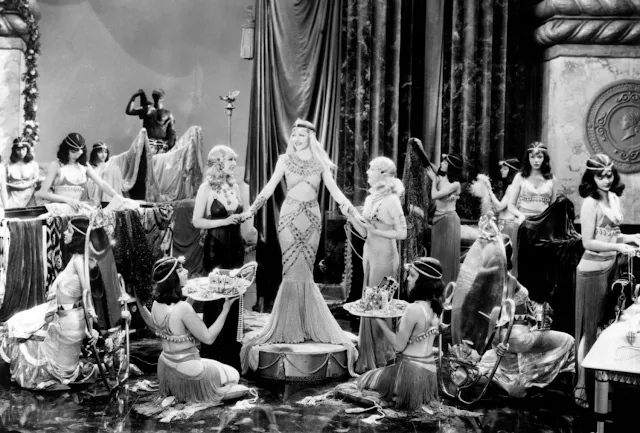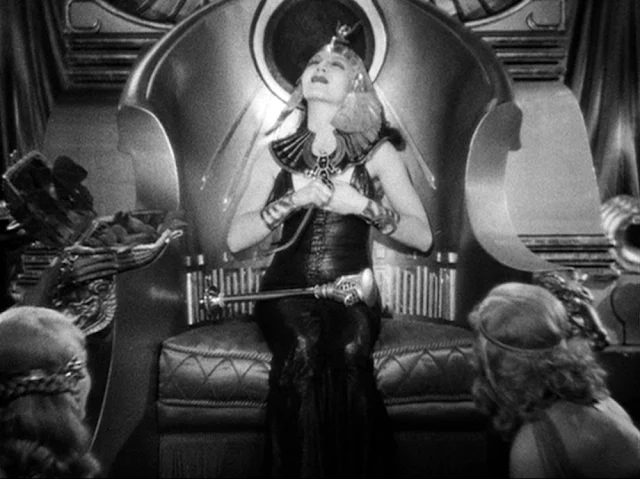Claudette Colbert's Cleopatra arrives rolled up in a rug and meets her end by clasping a rather limp garden snake to her bosom, and in between there's a lot of posing and tin-eared dialogue superimposed on the story told by Plutarch and Shakespeare. It won't do, of course, except for the camp extravagance of Hollywood awash in Cecil B. DeMille's usual sin, sex, and sadism. If the 1963 version of the story had been this entertainingly vulgar, it might have made money.
A blog formerly known as Bookishness / By Charles Matthews
"Dazzled by so many and such marvelous inventions, the people of Macondo ... became indignant over the living images that the prosperous merchant Bruno Crespi projected in the theater with the lion-head ticket windows, for a character who had died and was buried in one film and for whose misfortune tears had been shed would reappear alive and transformed into an Arab in the next one. The audience, who had paid two cents apiece to share the difficulties of the actors, would not tolerate that outlandish fraud and they broke up the seats. The mayor, at the urging of Bruno Crespi, explained in a proclamation that the cinema was a machine of illusions that did not merit the emotional outbursts of the audience. With that discouraging explanation many ... decided not to return to the movies, considering that they already had too many troubles of their own to weep over the acted-out misfortunes of imaginary beings."--Gabriel García Márquez, One Hundred Years of Solitude
Search This Blog
Thursday, February 27, 2025
Cleopatra (Cecil B. DeMille, 1934)
Cast: Claudette Colbert, Warren William, Henry Wilcoxon, Joseph Schildkraut, Ian Keith, Gertrude Michael, C. Aubrey Smith, Irving Pichel, Arthur Hohl, Edwin Maxwell, Ian Maclaren. Screenplay: Waldemar Young, Vincent Lawrence, Bartlett Cormack. Cinematography: Victor Milner. Art direction: Roland Anderson, Hans Dreier. Costume design: Travis Banton. Film editing: Anne Bauchens. Music: Rudolph G. Kopp.







